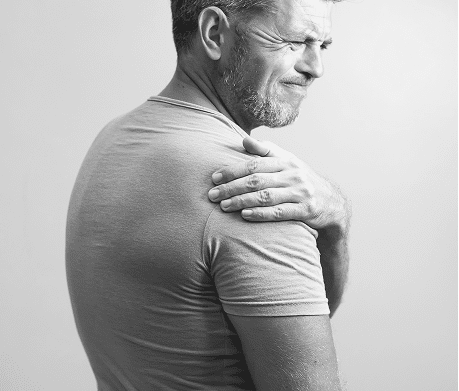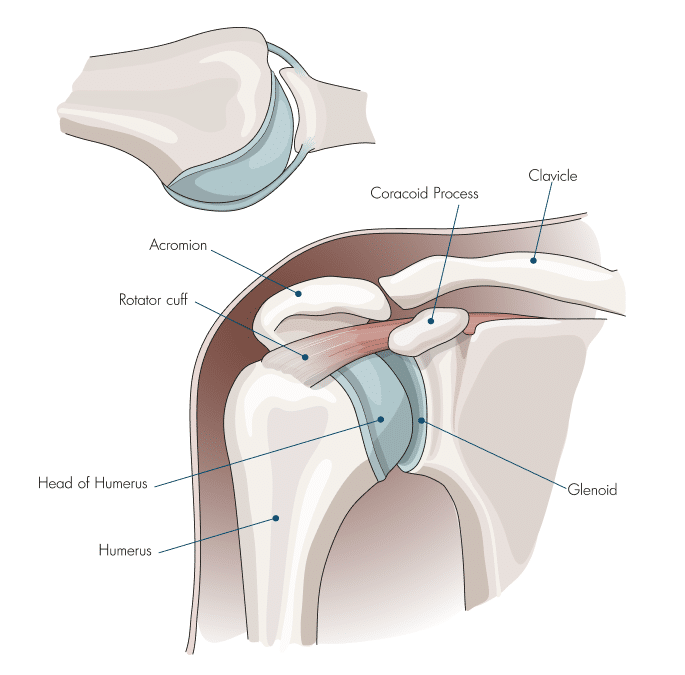The Anatomy of the Shoulder
The shoulder is a ball and socket joint. It consists of two main parts: a ball (humeral head) at the top of your upper arm bone (humerus) that fits into a rounded socket (glenoid), a part of the shoulder blade bone (scapula). Bands of tissue called ligaments (shoulder capsule) and the tendons of the rotator cuff connect the ball to the socket and provide stability to the joint.
The deltoid and rotator cuff muscles help to move and twist your arm. The bony surfaces of the ball and socket have a smooth, durable cover of articular cartilage that cushions the ends of the bones and helps them move easily.
A thin, smooth tissue called synovial membrane covers all remaining surfaces of the shoulder joint. In a healthy shoulder, this membrane makes a small amount of fluid that lubricates and limits friction in your shoulder joint. Normally, all the parts of your shoulder work in harmony, allowing you to move easily and without pain.




